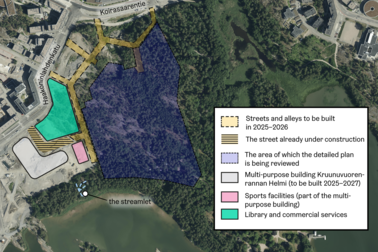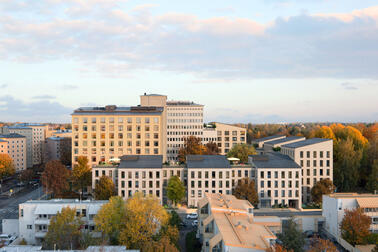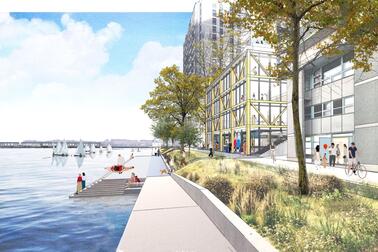
The modernising infill construction at Mellunpuisto was inspired by the idea of active people in a housing company years ago. They wanted that the buildings at Pallaksentie 1 and Ounasvaarantie 2, which were built in the 1960s, would not be renovated but replaced by new buildings. The vision becomes a reality when seven old buildings were demolished and the Mellunpuisto block consisting of 17 modern residential buildings will be built on the plots.
The construction project will bring new homes to about 2,000 people.
The future block is situated in an excellent location in the Mellunkylä district right next to the Mellunmäki metro station.
The Mellunpuisto project starts the environmental renewal of Mellunmäki metro station
The future Mellunpuisto will consist of four small blocks with lush courtyards. Each small block has several buildings with brick as the main facade material. The tallest of the buildings has 13 floors, and the others have six to nine floors. The buildings will house family and small apartments.
The new Mellunpuisto area has accommodation for up to 2,000 residents. The area will have energy-efficient, accessible housing in modern apartments that suit different life situations.
-The Mellunpuisto projects starts the renewal of the environment of the Mellunmäki metro station. Residential and commercial premises is planned next to the metro station as well as the tram line that will carry passengers all the way to the airport in the future. City services will also improve and diversify near Mellunpuisto,” says project manager Ritva Tanner from the City of Helsinki.
The City of Helsinki’s goal is for the construction of the blocks to proceed quickly and for Mellunmäki to already receive new housing from Mellunpuisto in the next few years.
Innovative solutions that reduce housing footprint
The design of Mellunpuisto aims at innovative solutions that reduce the housing carbon footprint. The area will become partially energy self-sufficient. Among others, the intention is to utilise green roofs, geothermal heat and solar energy. Renewable district heating supports local energy production, where possible. The solutions contribute to the City of Helsinki’s goal of being carbon neutral by 2030.
Mellunkylä is a large, lush district in eastern Helsinki. It consists of the whole made up by the centres, parks, green areas and sports facilities, schools and daycare centres of Kontula and Mellunmäki, as well as diverse residential areas. Mellunkylä is also one of the four urban renewal areas. The intention with the urban renewal is to increase the vitality of the districts and to prevent regional segregation. The urban renewal will be carried out until 2035.


